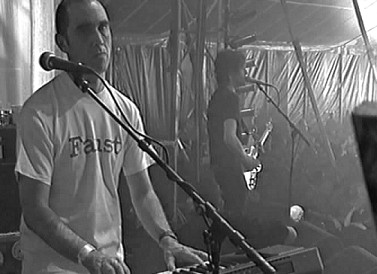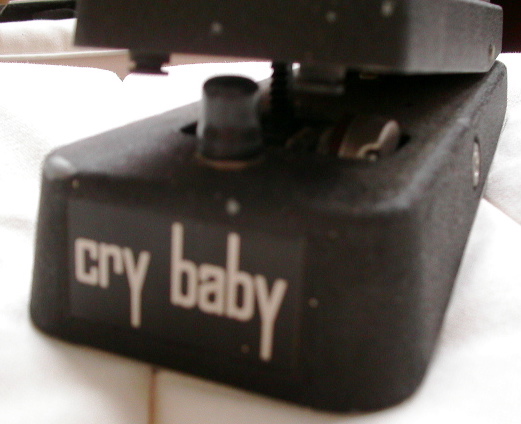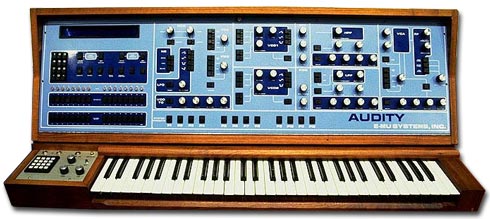|
Rite²
''Rite²'' is an ambient music album by Julian Cope, released in 1997. It is technically Cope's fourteenth solo album, but is also the follow-up to the earlier album '' Rite'' (released in 1992 and credited to "Julian Cope & Donald Ross Skinner") and is the second in the ''Rite'' series. For ''Rite²'', Cope collaborated extensively with synthesizer player Thighpaulsandra ( Coil, Spiritualized) although the album was credited to Cope alone. The album has been described as a tribute of sorts to Krautrock bands such as Amon Düül II and Tangerine Dream and is based on the sound of the Mellotron and the wah-wah guitar, although it also employs miscellaneous tone generators the ARP 2600 synthesizer and the Hammond B3 organ, as well as vocal chants."The S.P.A.C.E.R.O.C.K.E.R.’s Gu ... [...More Info...] [...Related Items...] OR: [Wikipedia] [Google] [Baidu] |
Interpreter (album)
''Interpreter'' is the thirteenth solo studio album, and twentieth album overall by English rock musician Julian Cope, released by Echo Records in October 1996. Particularly inspired by Cope's involvement with the Newbury bypass protest, the record features socially and environmentally-concerned lyrics. The musician worked with numerous guest musicians, including substantial contributions from Thighpaulsandra, resulting in a sprawling album that extends the pop style of '' 20 Mothers'' (1995) while incorporating styles of glam pop, space rock, orchestral pop, with string arrangements and electronic overtones. The record is split into two separate parts, "Phase 1" and "Phase 2". Exemplifying Cope's Neolithic interests, ''Interpreter'' was packaged with a fold-out "mythological mind map" depicting sites on the Marlborough Downs, and depicts the Cairnholy standing stones in Scotland on its cover. The album was not a commercial success, reaching number 39 on the UK Albums Chart, b ... [...More Info...] [...Related Items...] OR: [Wikipedia] [Google] [Baidu] |
Odin (Julian Cope Album)
''Odin'' is an ambient music album by Julian Cope, released in 1999. It is Cope's third album of ambient music and his fifteenth solo album overall. The album is a 73-minute-long vocal drone piece interwoven with Mellotron The Mellotron is an electro-mechanical musical instrument developed in Birmingham, England, in 1963. It is played by pressing its keys, each of which pushes a length of magnetic tape against a capstan, which pulls it across a playback head. A ... and is referred to by Cope as “a simultaneously-synthesized parallel-harmonic Breathing Meditation.”"The S.P.A.C.E.R.O.C.K.E.R.’s Guide to Julian Cope" (Aural Innovations magazine #23, April 2003) It was recorded in one take, as Cope explained, "The preparation of the studio took six hours, but the ... [...More Info...] [...Related Items...] OR: [Wikipedia] [Google] [Baidu] |
Album
An album is a collection of audio recordings issued on compact disc (CD), Phonograph record, vinyl, audio tape, or another medium such as Digital distribution#Music, digital distribution. Albums of recorded sound were developed in the early 20th century as individual Phonograph record#78 rpm disc developments, 78 rpm records collected in a bound book resembling a photograph album; this format evolved after 1948 into single vinyl LP record, long-playing (LP) records played at revolutions per minute, rpm. The album was the dominant form of recorded music expression and consumption from the mid-1960s to the early 21st century, a period known as the album era. Vinyl LPs are still issued, though album sales in the 21st-century have mostly focused on CD and MP3 formats. The 8-track tape was the first tape format widely used alongside vinyl from 1965 until being phased out by 1983 and was gradually supplanted by the cassette tape during the 1970s and early 1980s; the populari ... [...More Info...] [...Related Items...] OR: [Wikipedia] [Google] [Baidu] |
Krautrock
Krautrock (also called , German for ) is a broad genre of experimental rock Experimental rock, also called avant-rock, is a subgenre of rock music that pushes the boundaries of common composition and performance technique or which experiments with the basic elements of the genre. Artists aim to liberate and innovate, with ... that developed in West Germany in the late 1960s and early 1970s among artists who blended elements of psychedelic rock, avant-garde music, avant-garde composition, and electronic music, among other eclectic sources. These artists incorporated hypnotic rhythms, extended musical improvisation, improvisation, musique concrète techniques, and early synthesizers, while generally moving away from the rhythm & blues roots and song structure found in traditional Anglo-American rock music. Prominent groups associated with the krautrock label included Neu!, Can (band), Can, Faust (band), Faust, Tangerine Dream, Kraftwerk, Cluster (band), Cluster, Ash Ra Tempel, Pop ... [...More Info...] [...Related Items...] OR: [Wikipedia] [Google] [Baidu] |
Head Heritage
Julian David Cope (born 21 October 1957) is an English musician and author. He was the singer and songwriter in Liverpool post-punk band the Teardrop Explodes and has followed a solo career since 1983 in addition to working on musical side projects such as Queen Elizabeth, Brain Donor and Black Sheep. Cope is also an author on Neolithic culture, publishing ''The Modern Antiquarian'' in 1998, and a political and cultural activist with a public interest in occultism and paganism. He has written two volumes of autobiography, ''Head-On'' (1994) and ''Repossessed'' (1999); two volumes of archaeology, ''The Modern Antiquarian'' (1998) and ''The Megalithic European'' (2004); and three volumes of musicology, ''Krautrocksampler'' (1995), ''Japrocksampler'' (2007); and ''Copendium: A Guide to the Musical Underground'' (2012). Early life Cope's family resided in Tamworth, Staffordshire, but he was born in Deri, Glamorgan, Wales, where his mother's parents lived, while she was stayin ... [...More Info...] [...Related Items...] OR: [Wikipedia] [Google] [Baidu] |
Progressive Rock
Progressive rock (shortened as prog rock or simply prog; sometimes conflated with art rock) is a broad genre of rock music that developed in the United Kingdom and United States through the mid- to late 1960s, peaking in the early 1970s. Initially termed "progressive pop", the style was an outgrowth of psychedelic bands who abandoned standard pop traditions in favour of instrumentation and compositional techniques more frequently associated with jazz, folk, or classical music. Additional elements contributed to its " progressive" label: lyrics were more poetic, technology was harnessed for new sounds, music approached the condition of "art", and the studio, rather than the stage, became the focus of musical activity, which often involved creating music for listening rather than dancing. Progressive rock is based on fusions of styles, approaches and genres, involving a continuous move between formalism and eclecticism. Due to its historical reception, the scope of progressiv ... [...More Info...] [...Related Items...] OR: [Wikipedia] [Google] [Baidu] |
Synth-pop
Synth-pop (short for synthesizer pop; also called techno-pop; ) is a subgenre of new wave music that first became prominent in the late 1970s and features the synthesizer as the dominant musical instrument. It was prefigured in the 1960s and early 1970s by the use of synthesizers in progressive rock, electronic, art rock, disco, and particularly the Krautrock of bands like Kraftwerk. It arose as a distinct genre in Japan and the United Kingdom in the post-punk era as part of the new wave movement of the late 1970s to the mid-1980s. Electronic musical synthesizers that could be used practically in a recording studio became available in the mid-1960s, and the mid-1970s saw the rise of electronic art musicians. After the breakthrough of Gary Numan in the UK Singles Chart in 1979, large numbers of artists began to enjoy success with a synthesizer-based sound in the early 1980s. In Japan, Yellow Magic Orchestra introduced the TR-808 rhythm machine to popular music, and t ... [...More Info...] [...Related Items...] OR: [Wikipedia] [Google] [Baidu] |
Hammond Organ
The Hammond organ is an electric organ invented by Laurens Hammond and John M. Hanert and first manufactured in 1935. Multiple models have been produced, most of which use sliding drawbars to vary sounds. Until 1975, Hammond organs generated sound by creating an electric current from rotating a metal tonewheel near an electromagnetic pickup, and then strengthening the signal with an amplifier to drive a speaker cabinet. The organ is commonly used with the Leslie speaker. Around two million Hammond organs have been manufactured. The organ was originally marketed by the Hammond Organ Company to churches as a lower-cost alternative to the wind-driven pipe organ, or instead of a piano. It quickly became popular with professional jazz musicians in organ trios—small groups centered on the Hammond organ. Jazz club owners found that organ trios were cheaper than hiring a big band. Jimmy Smith's use of the Hammond B-3, with its additional harmonic percussion feature, inspired a g ... [...More Info...] [...Related Items...] OR: [Wikipedia] [Google] [Baidu] |
ARP 2600
The ARP 2600 is a semi-modular analog subtractive audio synthesizer produced by ARP Instruments, Inc. History Developed by a design team headed by ARP namesake Allen R. Pearlman and engineer Dennis Colin, the ARP 2600 was introduced in 1971 as the successor to ARP's first instrument, the ARP 2500, at a retail price of US$2600. Unlike other modular systems of the time, which required modules to be purchased individually and wired by the user, the 2600 was semi-modular with a fixed selection of basic synthesizer components internally pre-wired, with clear text labels and front panel screen printed graphics indicating the function of different sections of controls, and the signal flow between them. The 2600 was thus ideal for musicians new to synthesis, due to its ability to be operated either with or without patch cords. On its initial release it was heavily marketed to high schools and universities. Features and architecture The ARP 2600 features three VCOs, a 4-pole (24 dB ... [...More Info...] [...Related Items...] OR: [Wikipedia] [Google] [Baidu] |
Wah-wah Pedal
A wah-wah pedal, or simply wah pedal, is a type of electric guitar effects pedal that alters the tone and frequencies of the guitar signal to create a distinctive sound, mimicking the human voice saying the onomatopoeic name "wah-wah". The pedal sweeps the peak response of a frequency filter up and down in frequency to create the sound, a spectral glide, also known as "the wah effect". The wah-wah effect originated in the 1920s, with trumpet or trombone players finding they could produce an expressive crying tone by moving a mute in and out of the instrument's bell. This was later simulated with electronic circuitry for the electric guitar when the wah-wah pedal was invented. It is controlled by movement of the player's foot on a rocking pedal connected to a potentiometer. Wah-wah effects may be used as a fixed-filter to alter an instrument’s timbre (known as a “cocked-wah”); they may be used when a guitarist is soloing; or, classically, they may be used to create a "wa ... [...More Info...] [...Related Items...] OR: [Wikipedia] [Google] [Baidu] |
Mellotron
The Mellotron is an electro-mechanical musical instrument developed in Birmingham, England, in 1963. It is played by pressing its keys, each of which pushes a length of magnetic tape against a capstan, which pulls it across a playback head. As the key is released, the tape is retracted by a spring to its initial position. Different portions of the tape can be played to access different sounds. The Mellotron evolved from the similar Chamberlin, but could be mass-produced more efficiently. The first models were designed for the home and contained a variety of sounds, including automatic accompaniments. Bandleader Eric Robinson and television personality David Nixon helped promote the first instruments, and celebrities such as Princess Margaret were early adopters. It was adopted by rock and pop groups in the mid to late 1960s. One of the first pop songs featuring the Mellotron was Manfred Mann's " Semi-Detached, Suburban Mr. James" (1966). The Beatles used it on tracks includ ... [...More Info...] [...Related Items...] OR: [Wikipedia] [Google] [Baidu] |
Tangerine Dream
Tangerine Dream is a German electronic music band founded in 1967 by Edgar Froese. The group has seen many personnel changes over the years, with Froese having been the only constant member until his death in January 2015. The best-known lineup of the group was its mid-1970s trio of Froese, Christopher Franke, and Peter Baumann. In 1979, Johannes Schmoelling replaced Baumann. Since Froese's death in 2015, the group has been under the leadership of Thorsten Quaeschning (Froese's chosen successor and the current longest-serving band member, having joined in 2005). He was joined by violinist Hoshiko Yamane in 2011, Ulrich Schnauss in 2014 and Paul Frick in 2020. Tangerine Dream are considered a pioneering act in electronica. Their work with the electronic music Ohr label produced albums that had a pivotal role in the development of the German musical scene known as kosmische Musik ("cosmic music"). Their "Virgin Years", so called because of their association with Virgin Recor ... [...More Info...] [...Related Items...] OR: [Wikipedia] [Google] [Baidu] |


.jpg)

.jpg)


